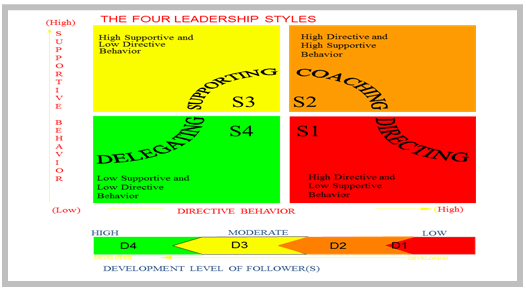The three aspects that are to be taken note of while acting on a situation are:
- Employees’ competences
- Maturity of the employees
- The complexity of the task
Leadership styles-
(S1) Telling– The leader orders his/her followers what to do and what not to do. It has no flexibility in work processes or ideation for the followers.
(S2) Selling – In this the leader sells his proposition to his/her followers by convincing them.
(S3) Participating– In this case, the leader accepts the evaluations and opinions of his/her followers in framing a process.
(S4) Delegating – The leader offloads his work to various of his followers and has little or no need to oversee them, given they are competent enough.

The leader decides the style of leadership as given in the picture depending on the developmental level of the follower as described below.
D4 – High Competence, High Commitment
D3 – High Competence, Variable Commitment
D2 – Some Competence, Low Commitment
D1 – Low Competence, High Commitment
